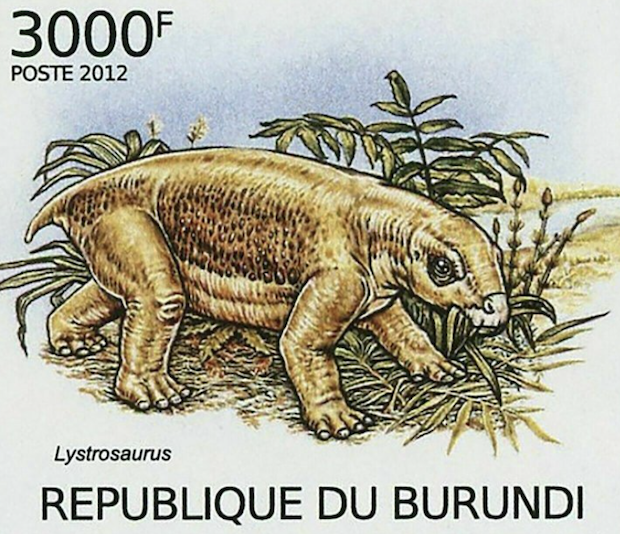Triassic Period
 |
| Lystrosaurus: A Triassic Period Lifeform |
Image Credit: Copyright of the Nation of Burundi |
Introduction:
The Triassic Period, spanning approximately 50 million years from around 252 to 201 million years ago, stands as a crucial chapter in Earth's geological history. It serves as a bridge between the devastating Permian-Triassic extinction event, which wiped out nearly 96% of marine species and 70% of terrestrial vertebrates, and the flourishing biodiversity of the Jurassic Period. The Triassic was a time of recovery, adaptation, and the emergence of fascinating new life forms that would set the stage for the Mesozoic Era.
Geological Setting:
The Triassic Period is part of the larger Mesozoic Era, which is often referred to as the "Age of Reptiles." Geologically, the Triassic is divided into three stages: the Early Triassic, the Middle Triassic, and the Late Triassic. During this time, Earth's continents were still fused together in the supercontinent Pangaea, creating a unified landmass with vast deserts and shallow seas.
Climate and Environment:
The climate of the Triassic Period was generally hot and arid, characterized by fluctuating sea levels. Deserts covered large portions of Pangaea, creating harsh conditions for life to thrive. However, there were also substantial equatorial regions with tropical climates, and the presence of shallow seas allowed for the evolution of marine life.
Life Forms:
-
Reptilian Dominance:
- The Triassic witnessed the dominance of reptiles, which diversified into various forms. Archosaurs, a group of reptiles that includes dinosaurs and crocodiles, rose to prominence during this period.
- Early relatives of dinosaurs, such as the Eoraptor, appeared in the Late Triassic. These small, agile predators laid the foundation for the giants that would roam the Earth in the following Jurassic Period.
-
Marine Life:
- Marine ecosystems saw the emergence of new species of fish and marine reptiles. Ichthyosaurs and nothosaurs, for example, evolved to fill ecological niches as swift, ocean-dwelling predators.
-
Flora:
- The Triassic flora adapted to the harsh environmental conditions. Conifers and cycads, which are cone-bearing and palm-like plants, respectively, became widespread. The evolution of these hardy plants laid the groundwork for the lush landscapes of the Jurassic.
-
Invertebrates:
- Invertebrates continued to thrive, with ammonoids, brachiopods, and other marine organisms diversifying in response to changing environmental conditions.
End of the Triassic:
The Triassic Period concluded with another mass extinction event, though not as severe as the Permian-Triassic event. Approximately 201 million years ago, the end-Triassic extinction marked the disappearance of several marine and terrestrial species, paving the way for the rise of new life forms in the Jurassic Period.
